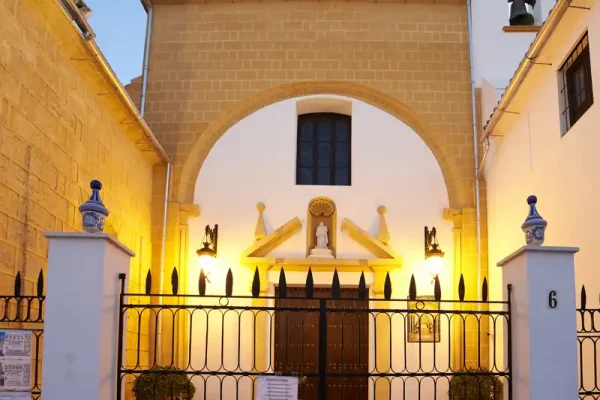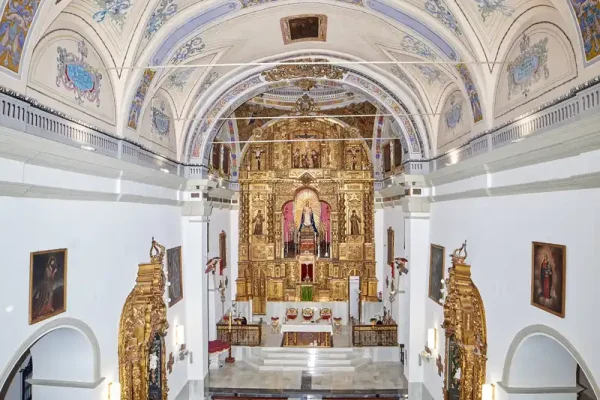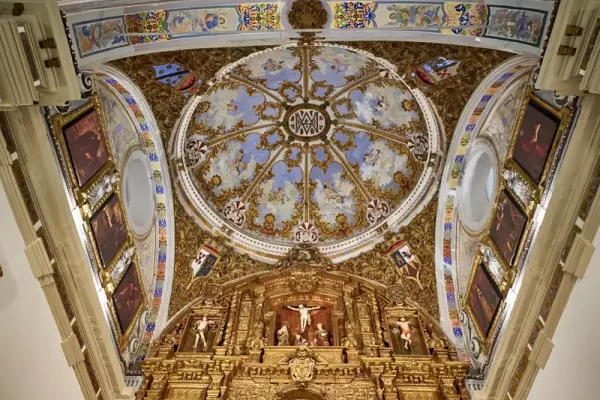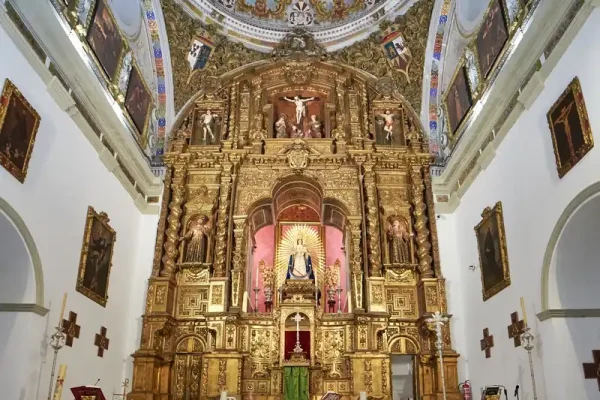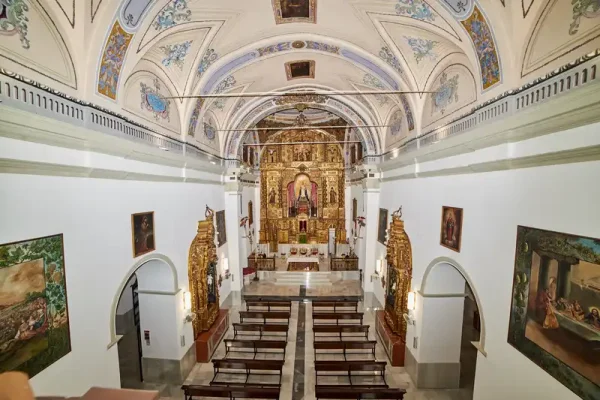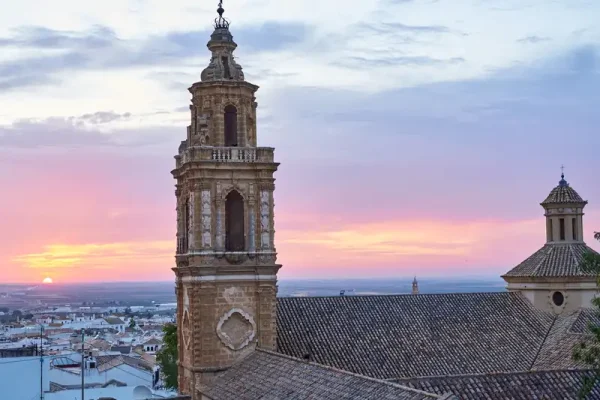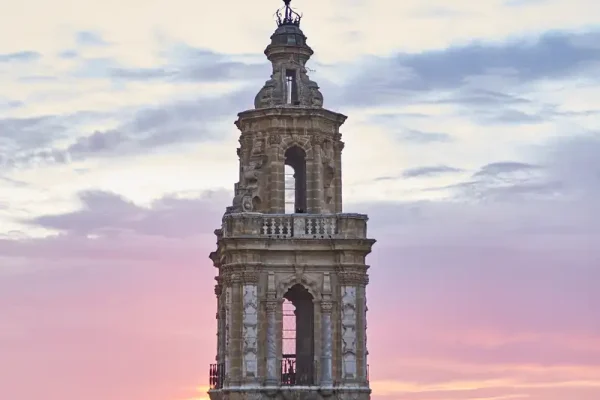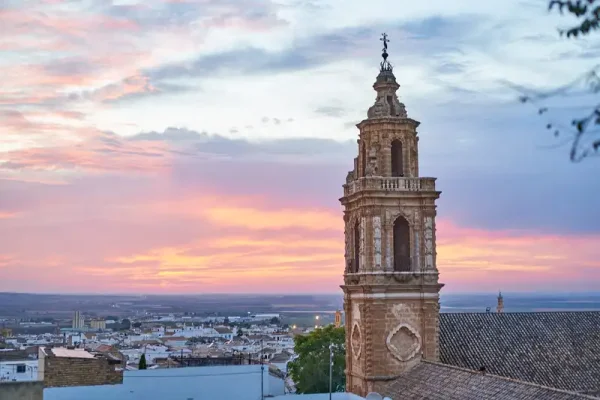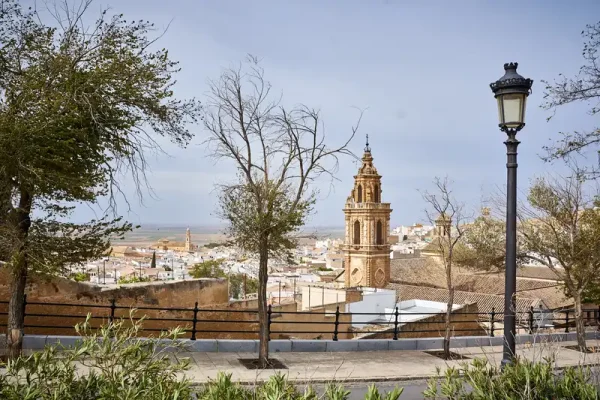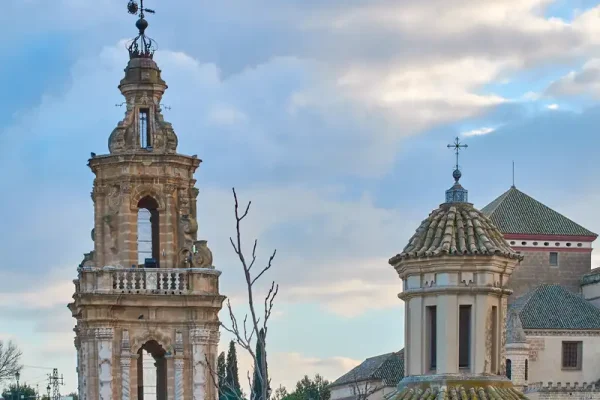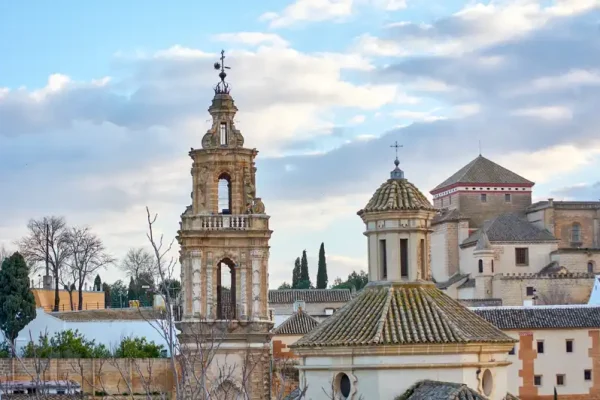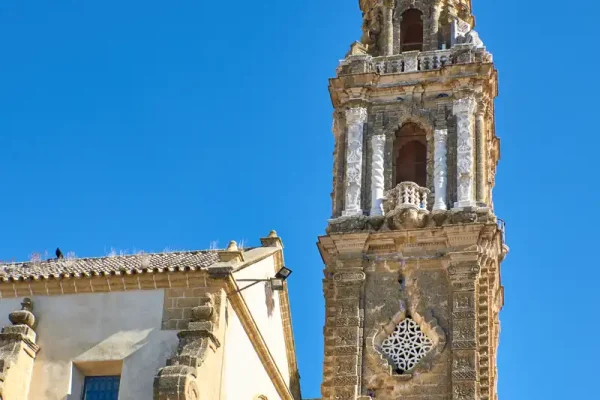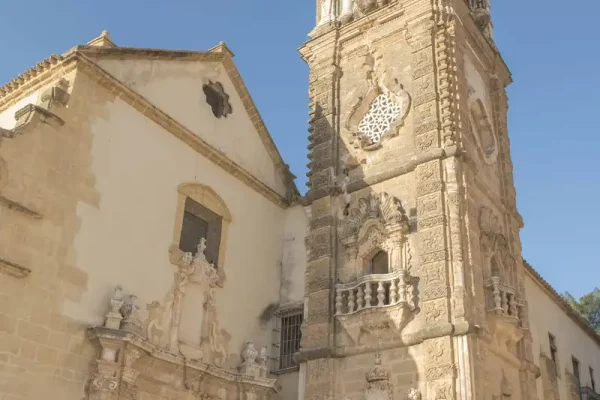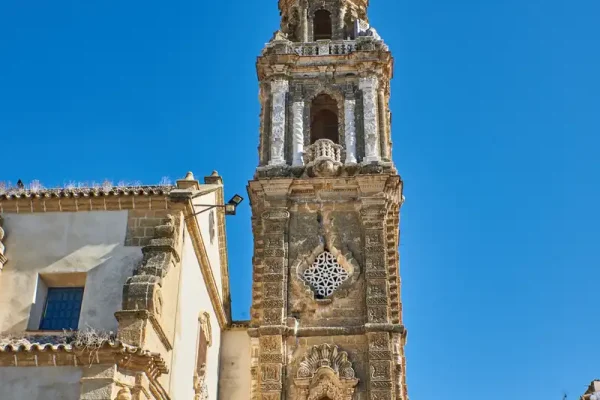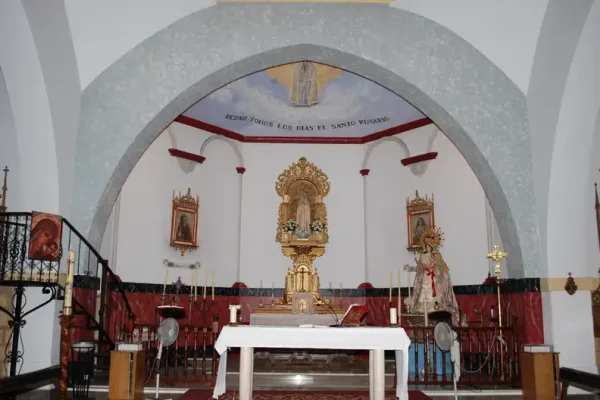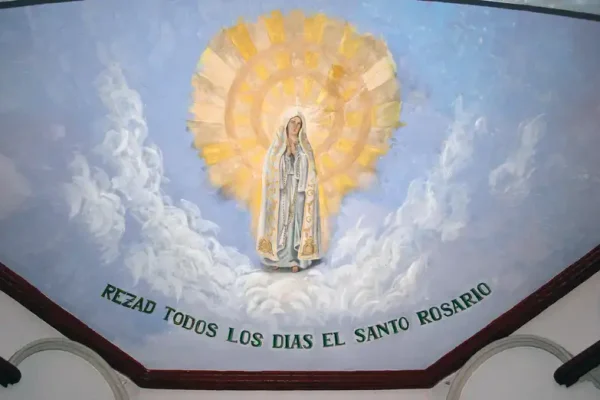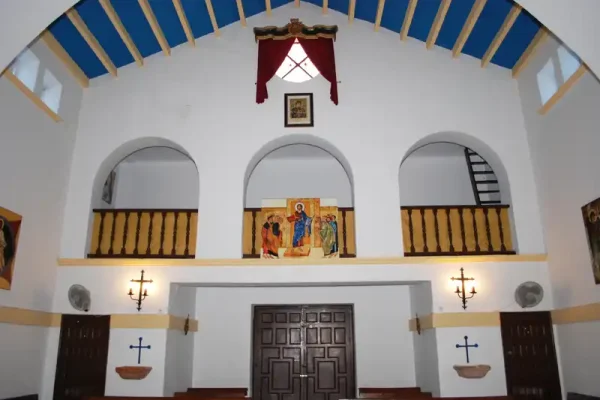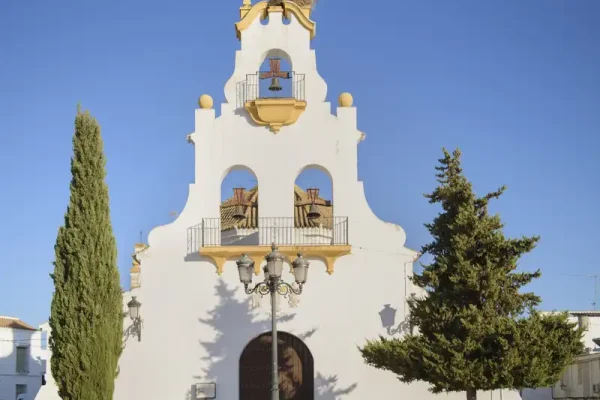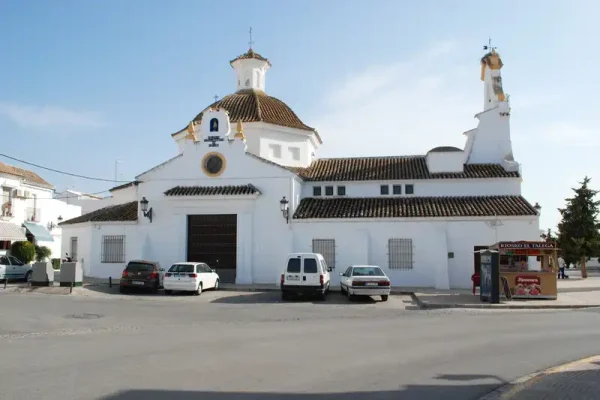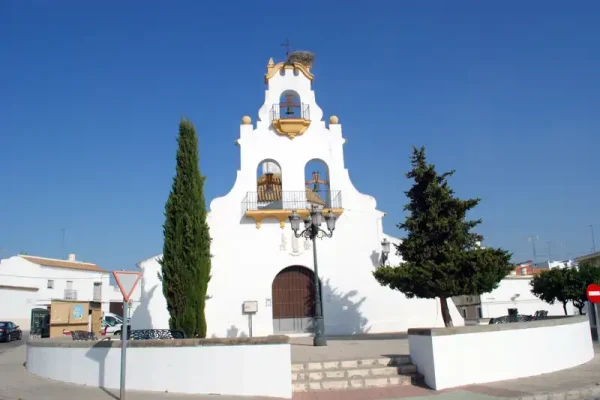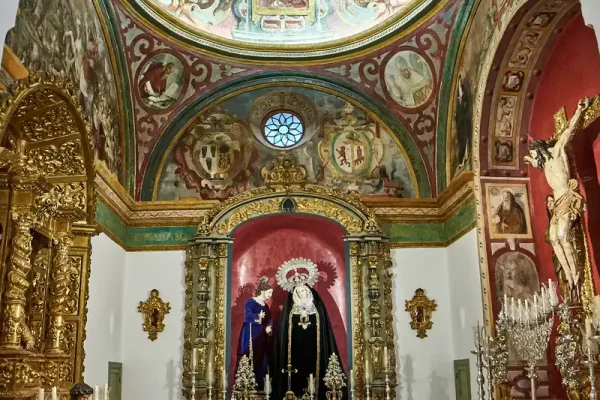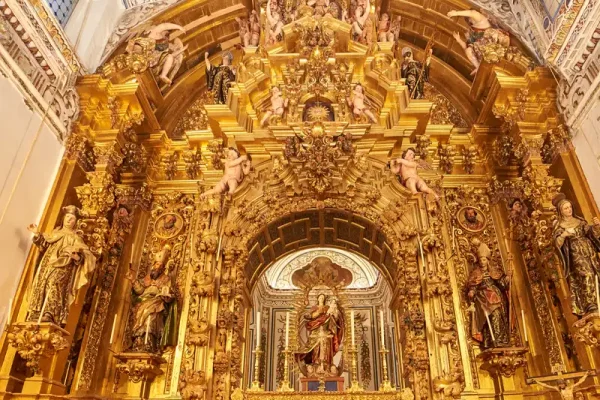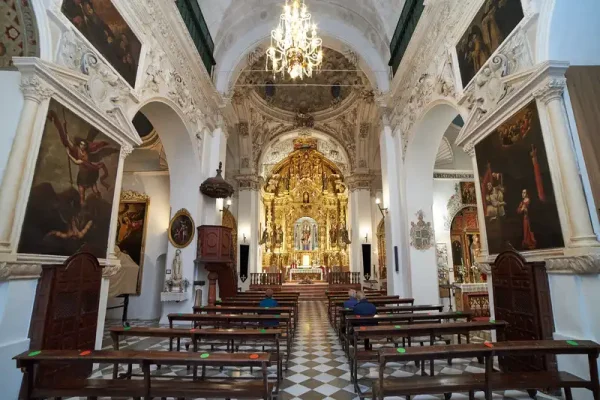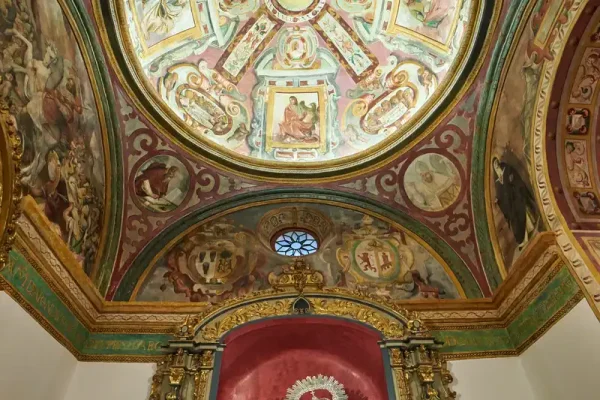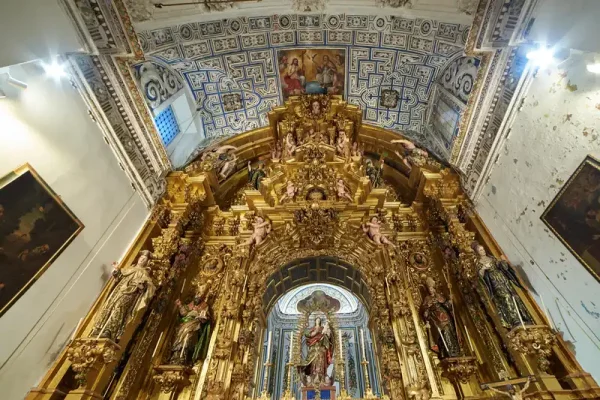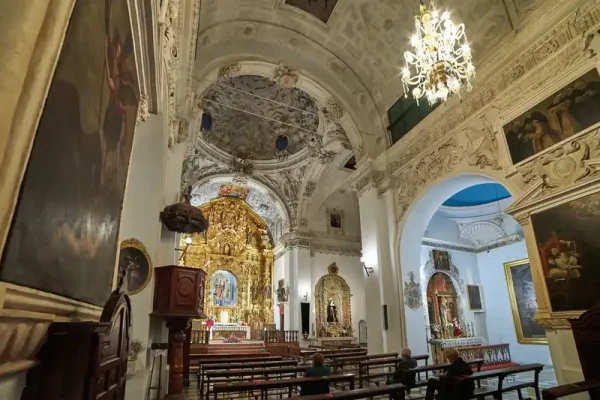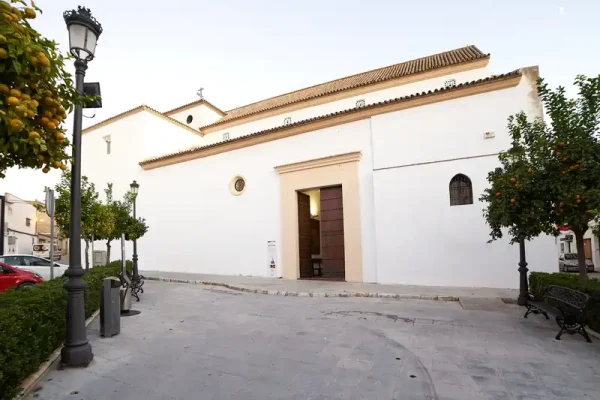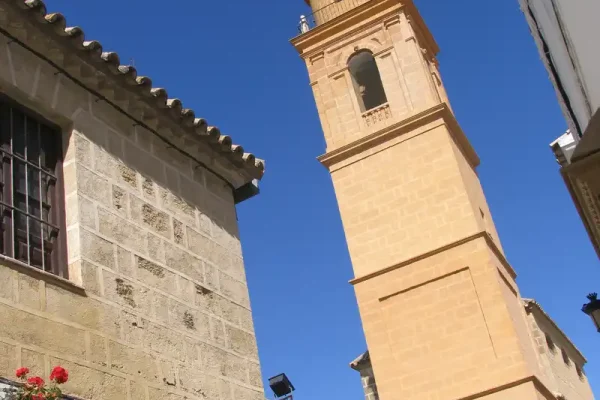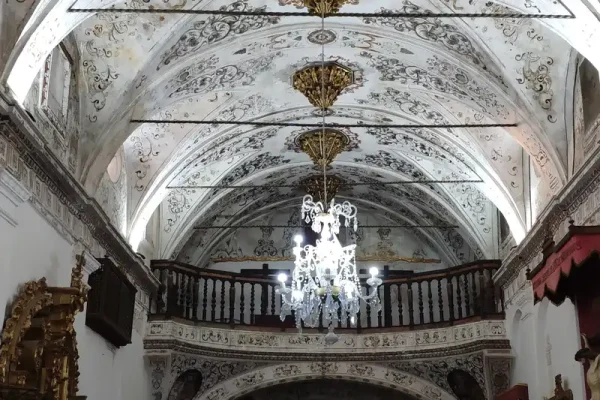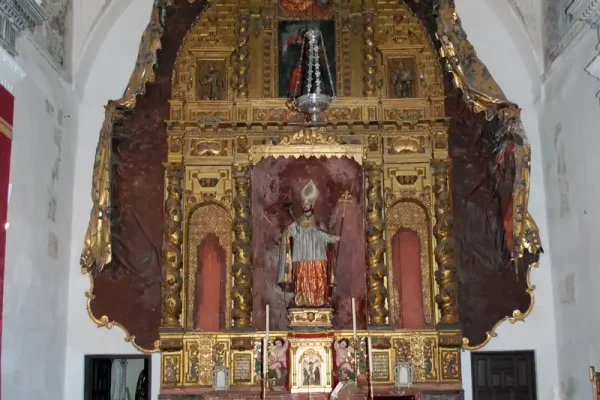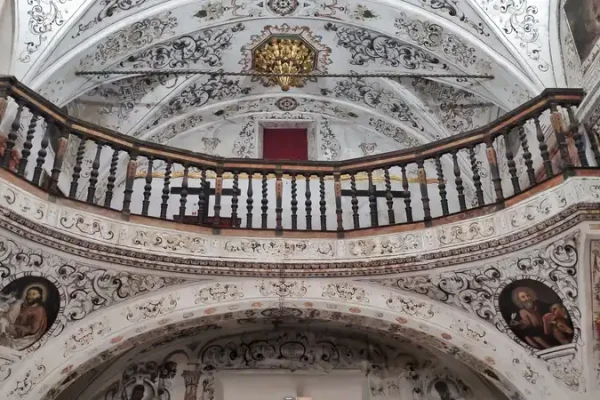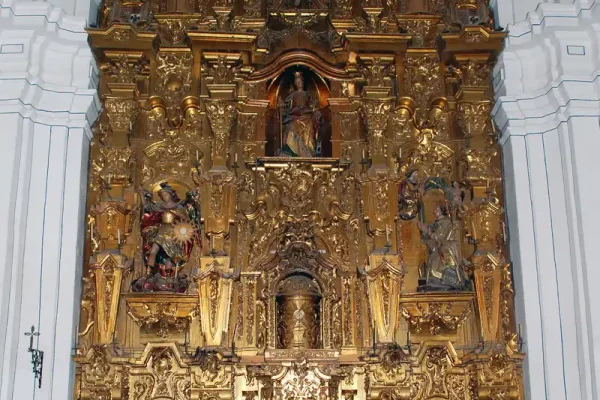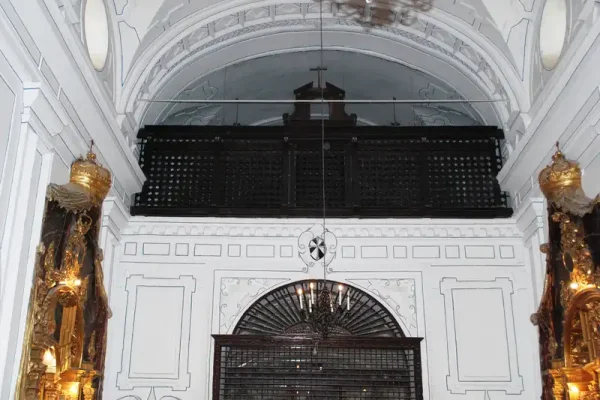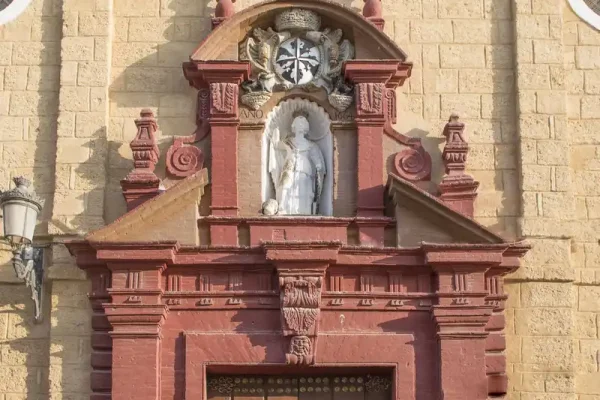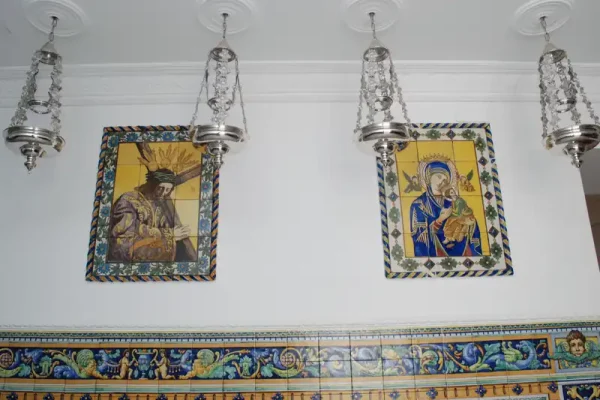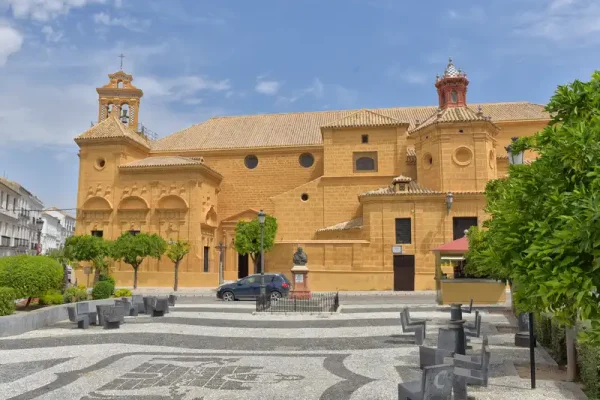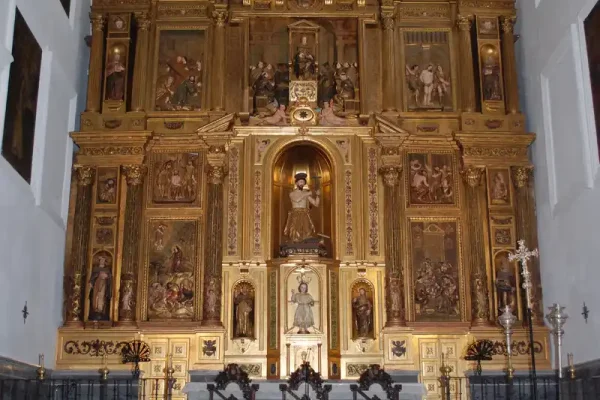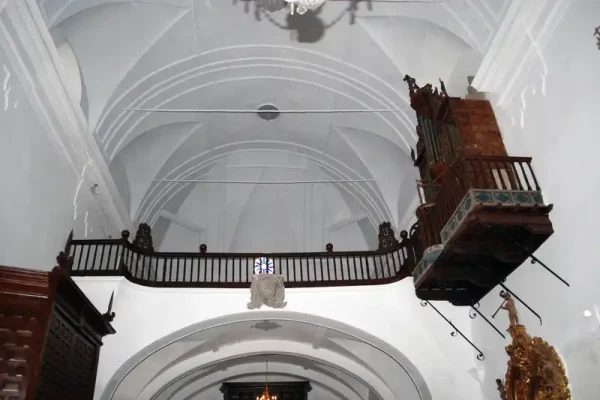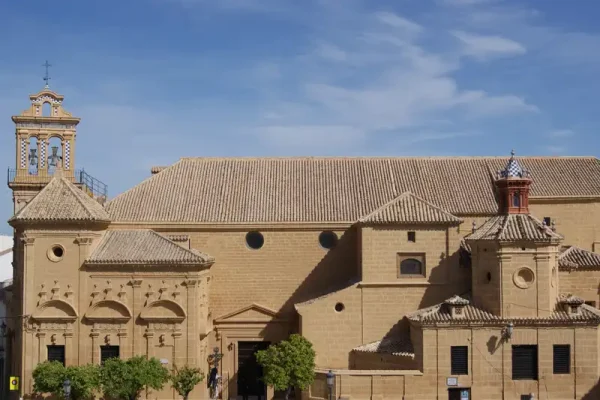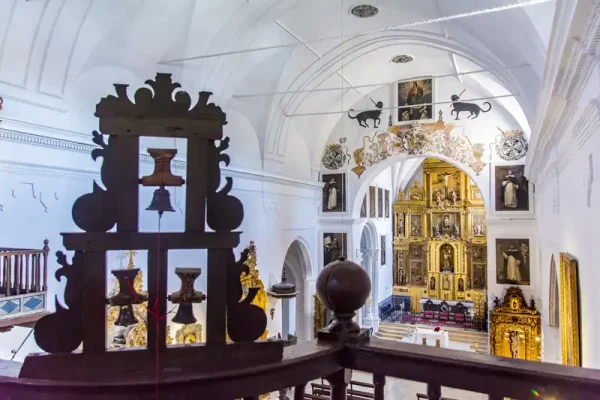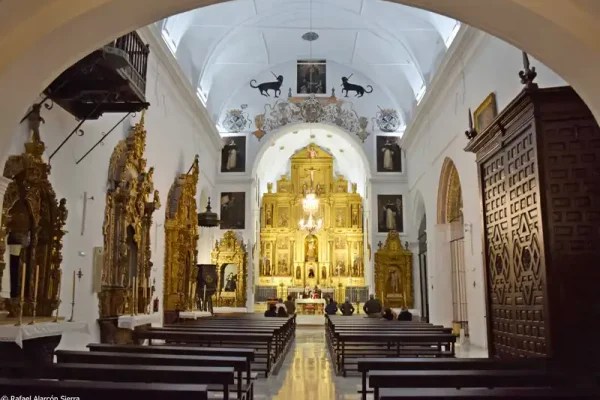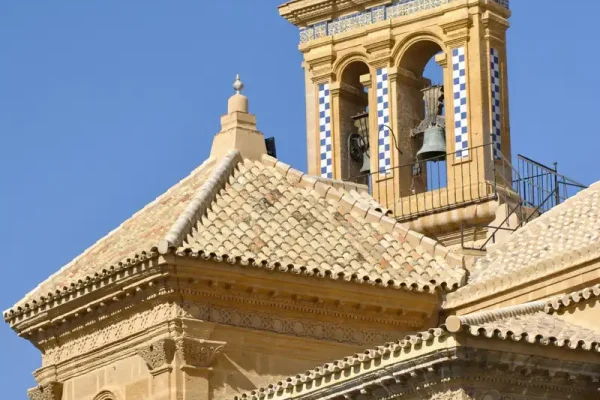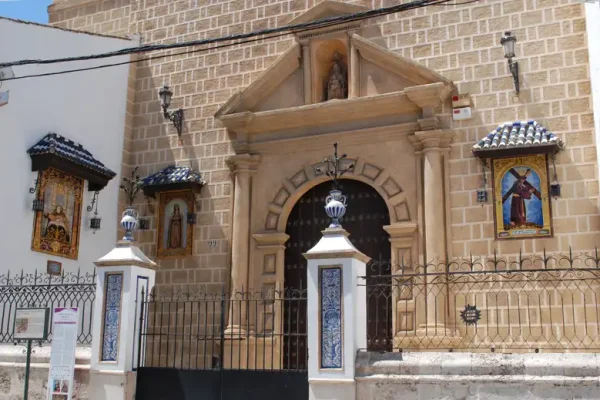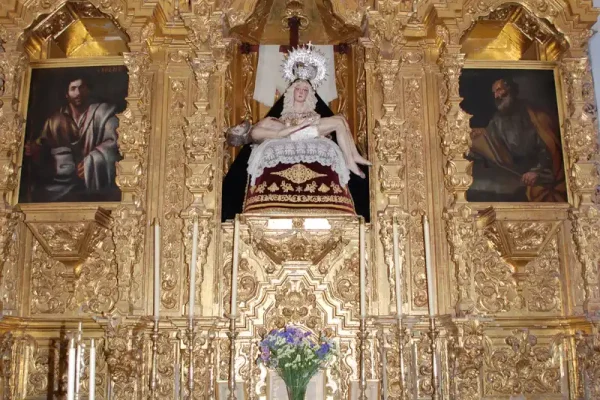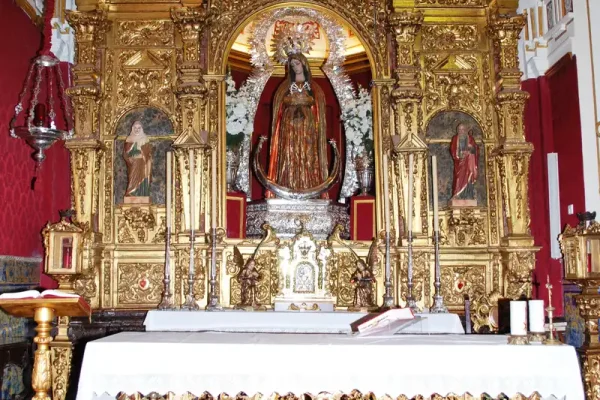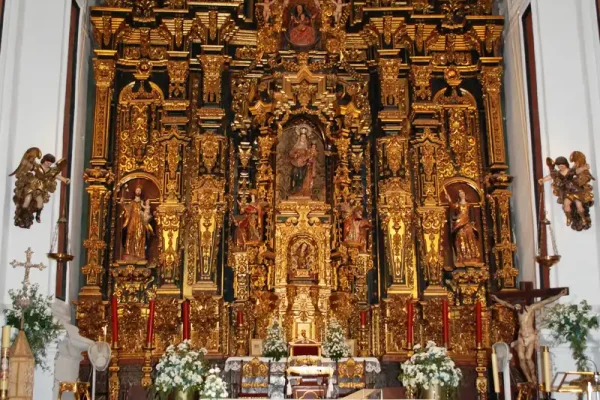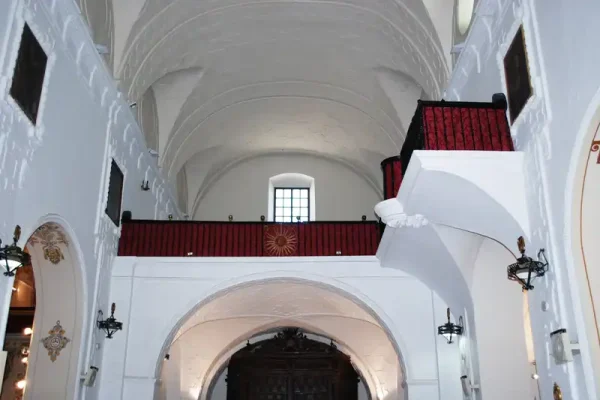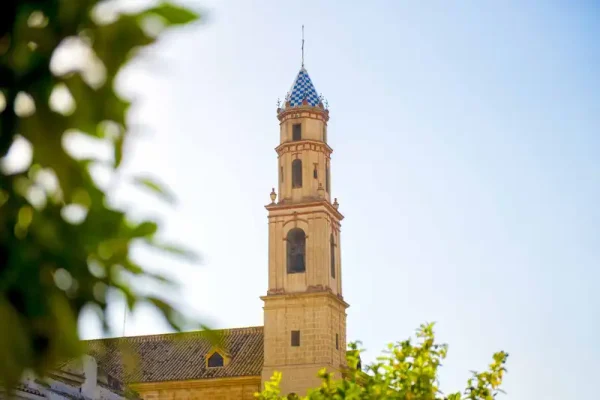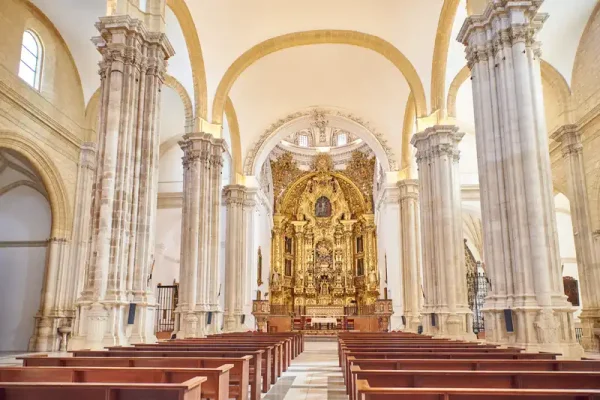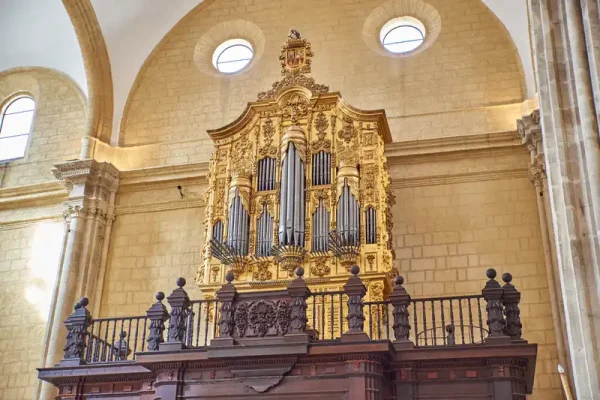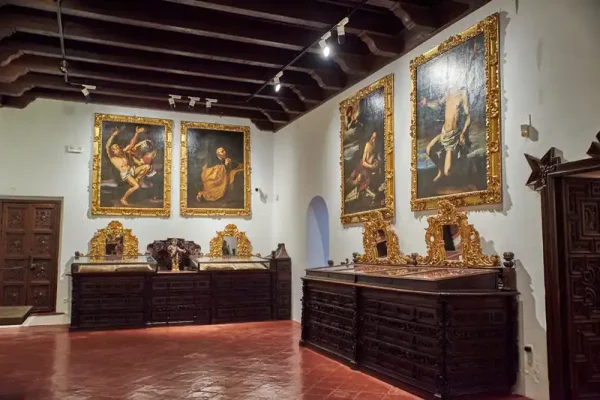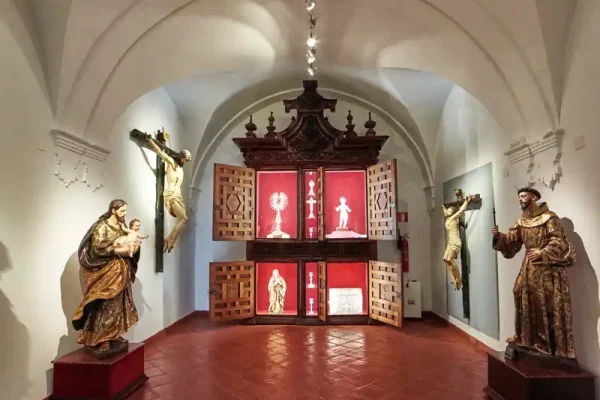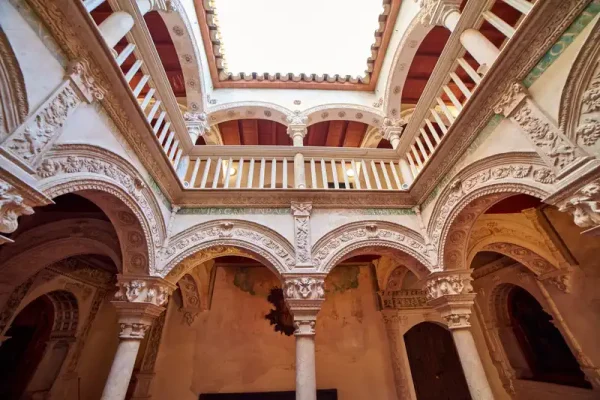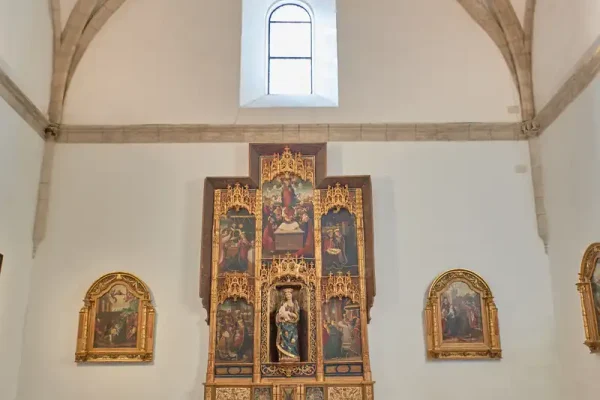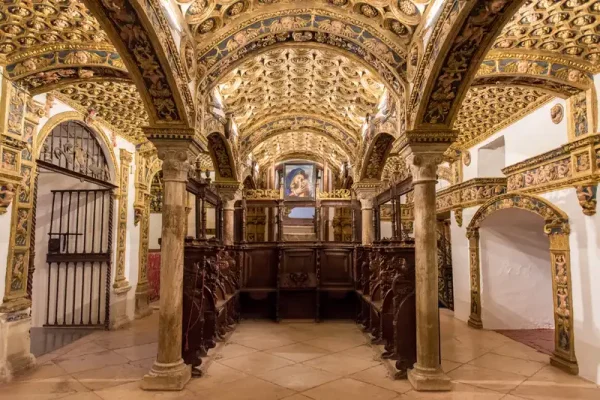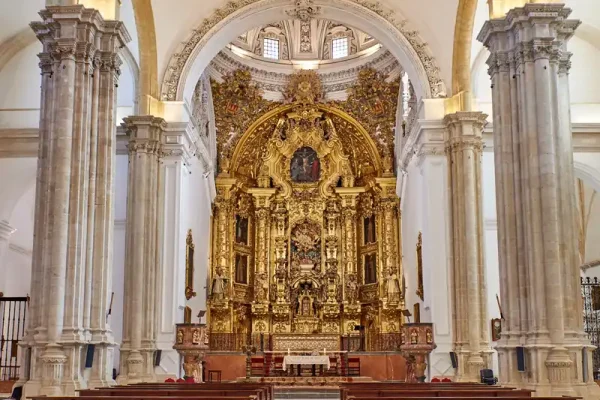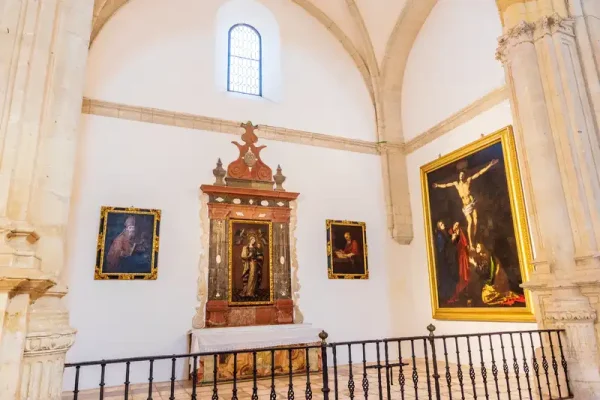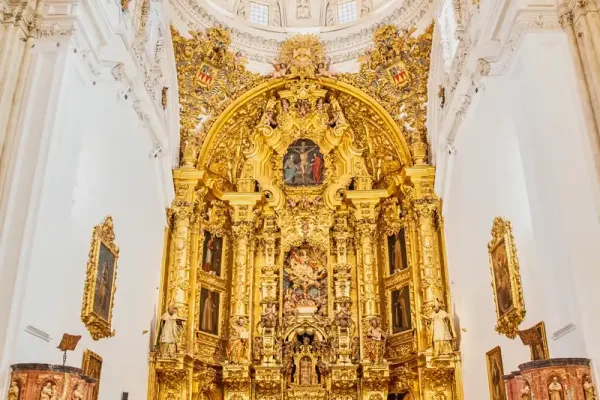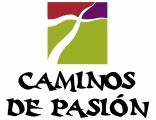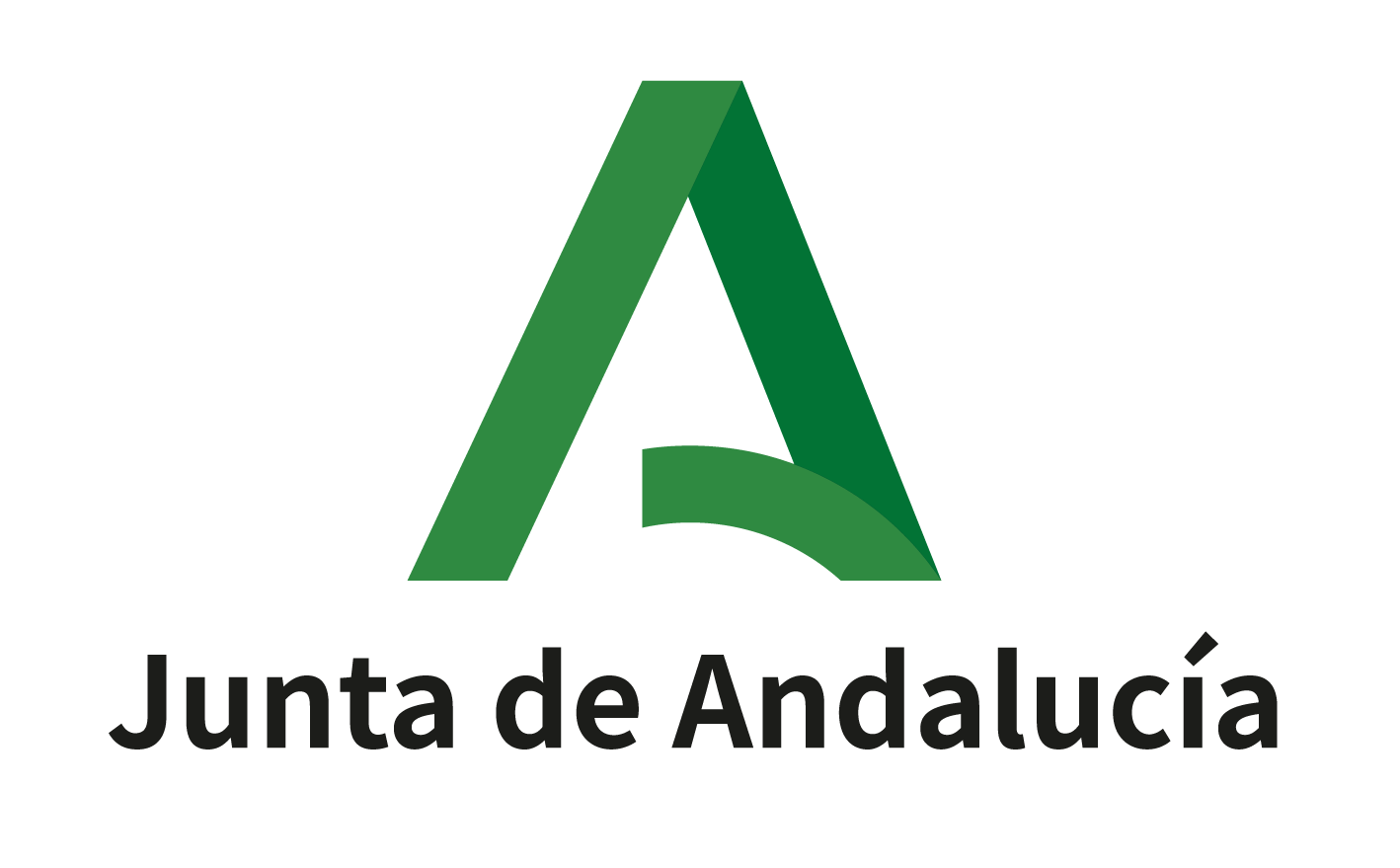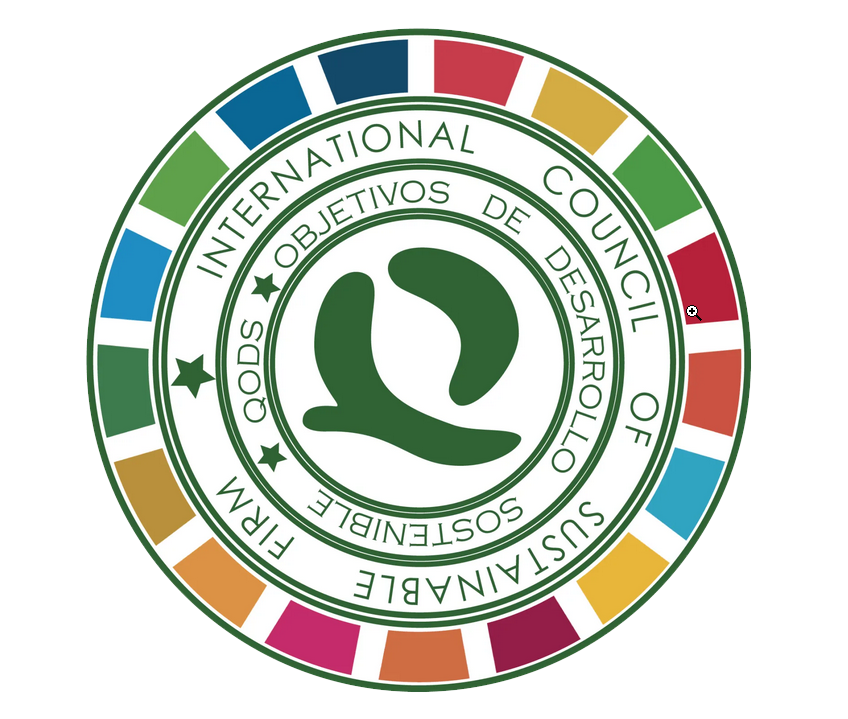


- Parish-Church of Ntra. Sra. de Consolación
- Church of La Merced
- CHURCH OF NTRA. SRA. DEL ROSARIO DE FÁTIMA
- Church of Saint Agustín
- Church of San Carlos El Real
- Church of Santa Catalina
- Church of Santa Clara
- Church of Santo Domingo. Parish of Nta. Sra. de la Asunción.
- Church of La Victoria
- COLLEGIATE CHURCH OF OSUNA
Parish-Church of Ntra. Sra. de Consolación
Originally, it belonged to the Third Order of Saint Francis; currently, it is a parish.
The construction of the church took place in the XVIth century, and we can appreciate the baroque renovations that were made in the XVIIth and the XVIIIth centuries. Inside, there are three naves separated by pillars covered by a barrel vault, whereas the main chapel presents a hemispherical dome resting on pendentives.
In the presbytery, the main altarpiece is located with Salomonic columns, work finished in 1702 by Pedro García de Acuña, originally was made for the convent El Calvario. The central niche is flanked by estipites which are repeated in the attic. The altarpiece is led by a image of the virgin of Consolación, saint patron of the town, which goes on processions on September 8th.
On the left nave, is located the Sacramental Chapel whose vault is decorated with plasterwork of 17th century.
Church of La Merced
17th- 18th century. Currently, it houses the Social Economy School (FAECTA). Its church doesn´t offer worship. It is closed to the public.
The church of La Merced was built in 1650, in its current location, although it underwent a deep remodeling in the second half of 18th century. The friars arrived in the town of Osuna in 1609, and they were initially settled in the hermitage of Saint Ana, located in the outskirts of the town. After two failed attempts, in 1637, the monastery was erected in the area that it currently occupies.
The most relevant news about this church belong to the 18th century in which many important works were verified. The artifice of this great work was the Vicar General of the Order, fray Miguel Ramón de San José, born in Osuna. The reconstruction of the church including the magnificent stone doorway, the building of the tower, marble Génova flooring and its altarpieces was possible thanks to him. The works were made between 1768 and 1775 under the direction of Antonio Ruiz Florindo, who also build the La Casa del Cabildo colegial (former granary) in San Pedro street.
In the 20th century this building was used as a hospital.
The church only has a nave, with chapels on both sides. The main altarpiece, from 1716, work of Francisco María de Ceiba, was moved to the Chapel Los Marineros of Sevilla.
The choir can be found at the bottom of the nave, with wooden stalls with the coat of arm carved.
The tower constitutes a fundamental piece of the monumental town. It is made of carved stone and ashlars.
The beauty of the tower is increased because it forms a unique corner of art with the facade of the Church.
Church of Our Lady of the Rosary of Fatima
It was built by the middle of the 20th century financed by the Town Council of Osuna. The church was blessed in 1953. The virgin of Fátima, coming from Portugal, passed through the town and its advocacy was for that reason. Thus, the carving which led the main altar of the church also comes from Portugal.
It has only a nave with a transept. Over the cloister that gives access to the temple, it is raised one gable bell with two bell housings.
Church of Saint Agustín
16th- 17th century. Former convent agustine. Free entry.
Mr. Juan Téllez Girón was also the founder of the convent of Augustinians of Osuna.
Its architecture is considered one of the most interesting because it constitutes the only and clear example of church of the Jesuits. The construction of this church started at the end of the 16th century, extending the works until the next century. The main facade has a pointed archway between the attached columns finished off with a niche.
The church has a single nave with lateral chapels communicated between them.
The transept is decorated with vegetal motifs over pendentives. The vault of the presbytery is decorated with plasterwork dates back 17th century.
The main altarpiece is one of the masterpieces of the sculpture Baroque of Osuna. It was made by Jerónimo Balbás between 1709 and 1712. This allowed the introduction of the “estípite” in the local architecture, and it would continue to be used thanks to the work of Francisco María de Ceiba, who collaborated with Balbás in the manufacturing of this altarpiece.
This church has one of the best imagery collection that we can see in Osuna: El Cristo de la Vera Cruz, la Virgen de la Expectación de Juan de Remesal, or San José y el Cristo de la Caña, from 18th century.
Church of San Carlos El Real
17th century. Former Jesuit convent. Free entry.
The Jesuits came to the city in 1612, settling initially in the space of the former hospital of La Encarnación. In a short period of time, they acquire the buildings needed to set their new church up, between Maese Diego, Hornillos and Sevilla streets, in 1615. Three years later, following the design made by Pedro Sánchez, the works of the convent of La Compañía begin. This convent will be renovated due to different interventions in the 18th century.
The Jesuits were secularised by a Pragmática Real (Spanish Ancient Regime law) in 1767. When they left, the convent was abandoned and the church, which was not lost, but was deprived of its most important works. Its main altarpiece can be found in the parish of El Saucejo. The whole ensemble became the property of the State –hence the name Real– and was transferred to the Economic Society of Friends of the Country of Osuna and, after its dissolution, to the City Council. It was also used as a Primary Education School and, since 1989, it houses the House of Culture.
Its entrance from the 18th century is not external, as it is inside the hall which leads to the former Jesuit convent. This anomalous situation was caused by the inclusion in the convent of an alley which leaded to the main entrance. It is made of polychromatic marble and it is decorated with jamb shafts.
Inside, the church has a single nave, covered by a barrel vault. In the presbytery, we find a baroque altarpiece from the last third of the 17th century, gilded in 1674, coming from the ruined convent of San Francisco. On this altarpiece, we can find on the sides the images of La Dolorosa Virgin and San Antonio de Padua; and, in the centre, the sculpture of San Carlos Borromeo, patron saint of the church.
Church of Santa Catalina
16th – 17th centuries. No mass currently. Closed to the public.
The Dominican convent of Santa Catalina Mártir was founded on May 8th, 1558 at the request of M. Juan Téllez Girón, who dies the following day.
The convent presents a mainly blind facade with two entrances, as was customary in the convents of nuns. The main one is made of bricks, finished in 1664, and it has the image of Santa Catalina, with the wheel of the martyrdom, in the niche of the pediment.
The church was built during the 17th century, although the structure was transformed in the 18th. Its single nave is covered by a barrel vault, and the main chapel, with a semi-spherical dome on pendentives. The main altarpiece is baroque, and was contracted with the carver Juan Guerra in 1765. On the sides, it presents the sculptures of San Miguel and the placing of San Ildefonso’s cassock; and in the centre, the image of Santa Catalina.
On the top, we can see the sculptures of San Francisco and Santo Domingo framing the image of a crucified Christ. The walls of the church are covered with six baroque altarpieces from the 18th century. The chorus is arranged at the foot of the nave, with very original stalls. The sacristy of the church is situated in front of the entrance, and it is covered with a tile wainscot from the 18th century similar to those in the monastery of La Encarnación, representing bullfighting and hunting scenes.
Church of Santa Clara
XVIth century. There is no mass currently. Closed to the public.
This convent was founded by the wife of the 4th Count of Ureña, Mrs. María de la Cueva.
The foundation dates back to 1550 and, at the beginning, the convent was placed in the South of the town. However, the location was not very appropriate according to the nuns and, in 1559, they exchanged it with the 4th Count of Ureña for a vegetable garden, situated next to the garden of the monastery, the mills of the stable and the wine cellar in La Huerta street.
The church has a single nave with a main chapel; the altars are situated in the side walls. The main altarpiece is baroque in style, and it was dominated by a valuable carving of Santa Clara, that can be found nowadays in the Collegiate Church.
The nuns also left a heavy pulpit with a polychromatic decoration.
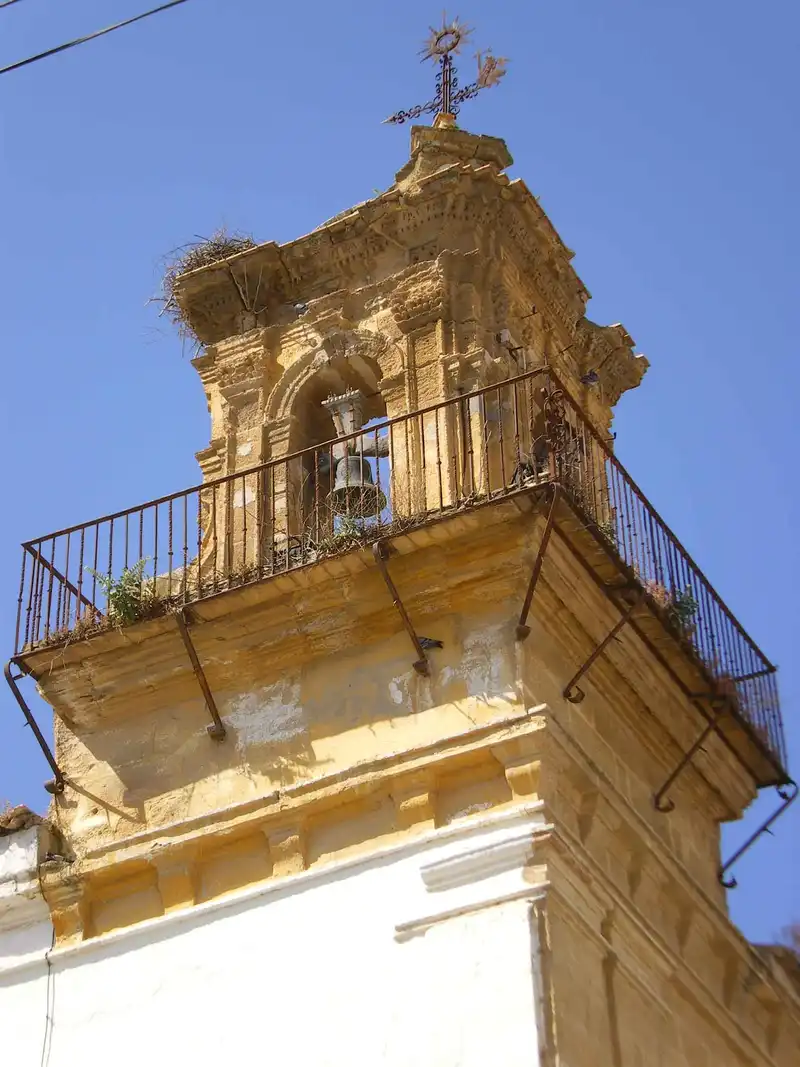
Church of Santo Domingo. Parish of Nta. Sra. de la Asunción.
16th century. Rebuilt in the 17th and 18th centuries. Renovated at the beginning of the 21st century. Free entry.
In 1531, the 4th Count of Ureña gave the former hermitage of San Sebastián and the attached hospital to the friars of the Order of Preachers so that they founded their convent. It seems that the Count asked not to demolish the hermitage, but make it absorbed by the new Church.
Its final construction dates back to the 7th March, 1547. However, it underwent several renovations during the 17th and 18th centuries. It presents two facades and, inside, there is a single nave covered by a barrel vault replacing a missing Mudejar ceiling.
The presbytery is raised a bit over the nave, and it is covered by a ribbed vault. In both sides of the chapel, there are side chapels covered by domes on pendentives.
The main altarpiece was ordered by Diego de Velasco and Jerónimo Hernández in 1582, and it is composed by the predella and two bodies of five compartments, separated by Corinthian columns. It is dominated by a sculpture of Santo Domingo penitente.
The two altarpieces, with paintings by Antonio de Alfián, were ordered in 1564, and are noteworthy. On them, we find the Virgen de Belén, which still preserve the sculpture work of Lorenzo Meléndez.
In the chorus, there is a stalls composed by 27 seats with their backs decorated with reliefs of Dominican Saints, from the 17th century. The organ, for its part, is from the 18th.
Furthermore, in the upper part, it is possible to visit a sacred art museum, with great valuable pieces belonging to the church.
Church of La Victoria
16th century. Reforms between 17th and 18th century. Free Entry.
Formerly it was the church of the convent of Los Mínimos de Saint Francisco de Paula, currently it is the church of La Victoria.
The building was founded in 1549, its first location was at the outskirts of the town, specifically in the Quarries, at the end of the Cañada street.
Following the conclusions of the Council of Trent, the convents are moved to the urban area, Los Mínimos founded a new building at the beginning of the 17th century which underwent important reforms in the 18th century. At the foot of the church the facade can be found with a pointed archway, and a niche at the top which hosts a sculpture of the virgin of La Victoria.
The inside of the church only has a nave with chapels between the buttresses, covered by a barrel vault. Furthermore, we can found great works of imagery such as the magnificent carving of the virgin of Los Dolores, made by José de Mora, Nuestro Padre Jesús Nazareno which is attributed to the workshop of Roldán and the virgin of Las Angustias.
COLLEGIATE CHURCH OF OSUNA
It was founded in 1535 by Mr. Juan Téllez Girón, IV Count of Ureña, after achieving a bull from the Pope in order to be, at the same time, both a Parish Church and a Collegiate; the temple was built in the place that was occupied by the Church of the Castle, totally destroyed by a fire.
The outside the temple surprises with its severity, the church is built with ashlars extracted from the quarries of Osuna. The main facade, located in the west wall, is called Puerta del Sol, where stands the excellent decoration of grotesques, eucharistic symbols, medallions and inscriptions which are distributed by the architectural elements. On the left side of the facade is located the tower, a work from 1918, after the destruction of the previous one by lightning, and which is still unfinished rises.
The interior of the church is rectangular with three naves and nine chapels containing magnificent altarpieces, images and paintings by prominent artists. It highlights the wide presbytery and the Chapel of the Immaculate, whose main ornament is an altar of the Christ of Mercy, which houses a magnificent carving of Christ on the Cross, the work of Juan de Mesa, held in 1623.
The construction of the Pantheon Ducal inside the Collegiate, had to start around 1545, consecrating the chapel 10 years later. It was founded by Don Juan Tellez Giron, and is Plateresque. It is attached to the Collegiate and has three main centers: the Patio of the ducal tomb, the Chapel and the Pantheon.
We can access the museum through a door, also in Plateresque style, held in mid 16th century. Its buildings are the old sacristy and the adjacent rooms.
Inside, it preserves its four halls works of great importance, as the collection of works by José de Ribera «the Españoleto» made in the seventeenth century, and a large set of pieces of jewelry made by important artists between the sixteenth and the nineteenth.

